Field visit to Lauriya Nandangarh and Kesariya in Champaran: Day six from Six days field trip to Lumbini and other sites
February 15, 2016
The last day of the trip was the day of shining Asokan pillars, big mounds and massive stupas. All in all two Asokan pillars were visited, one at Lauriya and other at Areraj, Champaran. A cluster of mounds was also spotted. It was observed that the mounds more than 11 in number form a crescent moon like shape with Asokan Pillar of Lauriya at one end. However, it needs to be confirmed through a systematic approach.
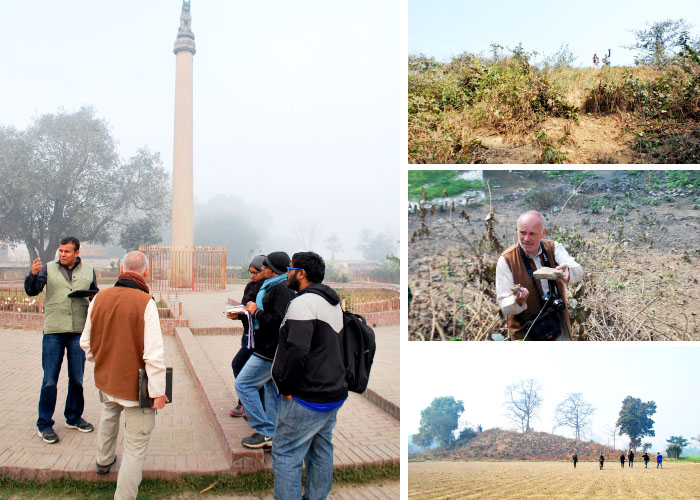
These mounds have been studied by archaeologists like Cunningham and Bloch. Each of these mounds was marked with English letters. Some mounds were also excavated to an extent in order to study their nature. Several baskets of charcoal, a lone silver punch marked, iron objects, a fragmentary spouted vase of pottery and a number of tablets with figure of Buddha were found in the process. These mounds have not been dated. There is also doubt whether all the mounds in cluster were of Buddhist origin. Bloch has considered them as ‘royal tombs’ belonging to a period before Buddha’s arrival. The team explored these mounds for a while capturing the landscape, collecting samples, and analyzing the base formation – brick or mud stupa.
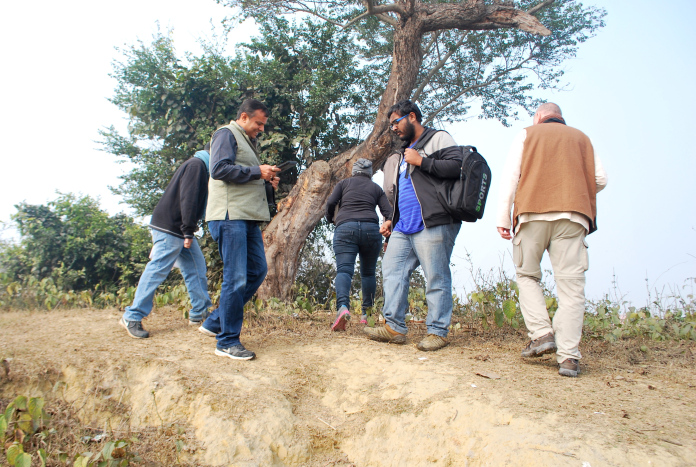
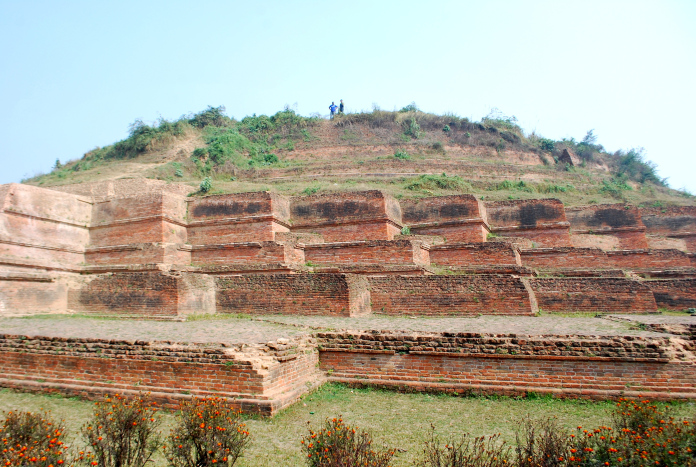
Other two big sites of the day were polygon-shaped stupas of Lauriya Nandangarh and Kesariya. The two stupas look similar to each other in polygon foundation with some crucial differences. The former has a staircase going down in the centre of the stupa while latter has very interesting pattern of Buddha statues in different gestures along its four diagonals ending at eight sides. At these sides, three parallel rows of Buddha statues can be spotted. Excavations at Kesariya were going on at the time of visit while the stupa of Lauriya Nandangarh is all above the ground now. However, there is a vast area around Lauriya’s stupa which has given evidences of huge monastic complex underneath.
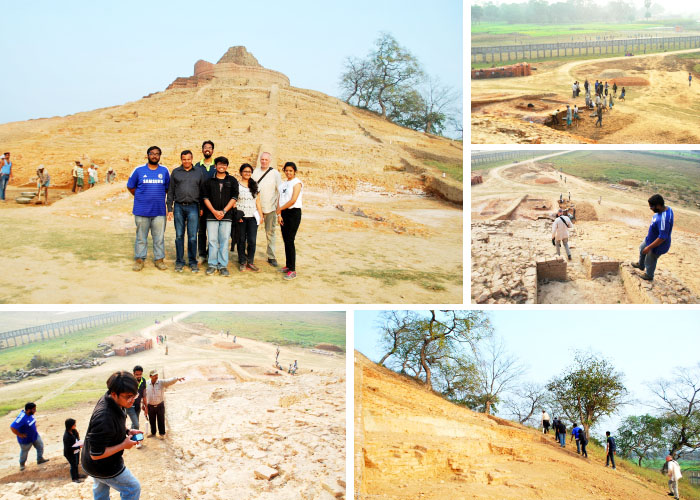
With these two exciting sites, the six day long trip came to an end. The team reached Rajgir campus before the dinner time.
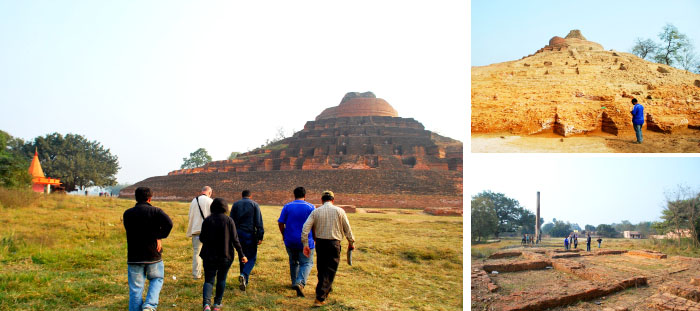
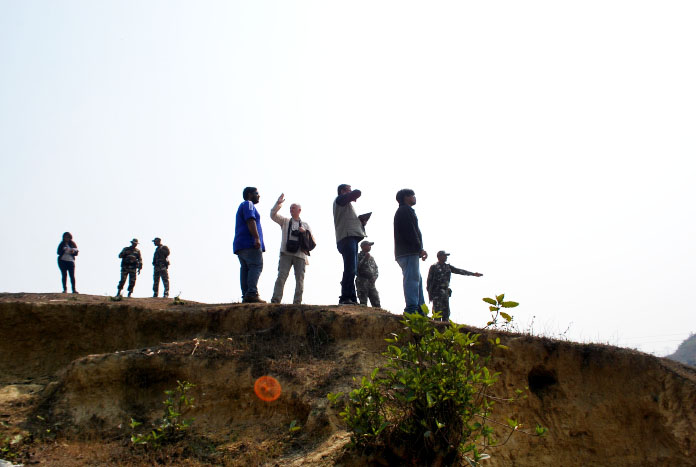
Reference:
Majumdar, N. G. “Exploartions at Lauriya-Nandangarh.” In ASI Annual Report of 1935-1936, 55-66. New Delhi: ASI, 1937.
Image credits: Shaashi Ahlawat